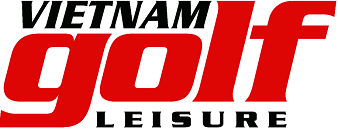Fighting Counterfeiting in Golf
They recognize that the physical and functional attributes like product quality, craftsmanship, design and technology can benefit their overall game.
For others, it’s more about showing a sense of fashion than it is about reducing their total score. For these golfers, arriving at the first tee with top-notch equipment is a type of psychological gamesmanship --showing others you’re ready to compete.
Whether it’s a drive to improve one’s game or to improve their fashion sense, this high demand for golf’s top luxury brands has led to a significant growth in the manufacture and supply of counterfeit equipment worldwide. Studies estimate that as many as 2 million counterfeit golf clubs are produced each year. To put that number in perspective, if every phony club were laid end-to-end it would stretch more than 8000 KM.
The growth of the Internet and rogue websites has led to a significant increase in the sale of counterfeit golf products over the last decade. As a result, golfers purchasing branded equipment from unauthorized dealers are often times tricked into spending their money on low quality goods.

Fighting Counterfeiting in Golf
To combat this counterfeiting, protect the integrity of the game and to protect consumers, leading golf manufacturers came together to form the U.S. Golf Manufacturers Anti-Counterfeiting Working Group (The Golf Group). Formed in 2004, the group is made of five of the top golf manufacturers in the world –Callaway-Odyssey; TaylorMade-Adidas Golf and Ashworth; PING; Cleveland Golf, Srixon and Never Compromise; and Acushnet.
The Golf Group works internationally with law enforcement and government agencies to identify and eliminate counterfeiting operations while also working to raise consumer awareness. This isn't only a brand issue, it's also an issue with quality, safety and honesty.
For golfers, the issues with counterfeit clubs can range anywhere from a loss of distance and accuracy to a safety issue—with shafts that shatter and heads that fly off mid-swing. Some golfers look online and see what they think are top-of-the-line clubs at very low prices, so they make the purchase. But as the old maxim goes, if it sounds too good to be true, it probably is.
In November 2013, The Golf Group announced that a preliminary injunction has been issued by the Southern District Court of Florida to shut down 60 websites where counterfeit clubs and products were reportedly being sold. The counterfeit products being sold through the websites included various types of equipment including clubs, balls, head covers and bags.
In December 2012, The Golf Group announced the completion of a successful law enforcement initiative resulting in the seizure of nearly 500,000 counterfeit golf products and the arrest of more than 30 suspects by the Public Security Bureau of China. They consider this to be one of the group’s most successful efforts in the fight against counterfeit equipment.

Identifying Authentic Equipment
One example of how these firms have taken steps to assist consumers identifying authentic equipment, Acushnet has put an easily recognized security label on the shaft, just below the grip. The label says "USGMC and JGGA" on the left side of the label and "Titleist & Certified Authentic" in the middle of the label. USGMC stands for the United States Golf Manufacturer’s Council, which is a council under the Sporting Goods Manufacturing Association. JGGA stands for the Japanese Golf Goods Association. The USGMC and JGGA fully support this program.
The Golf Group remains committed to educating consumers about how to spot and avoid fake golf products through its website: www.keepgolfreal.com















-cr-120x90.png)

